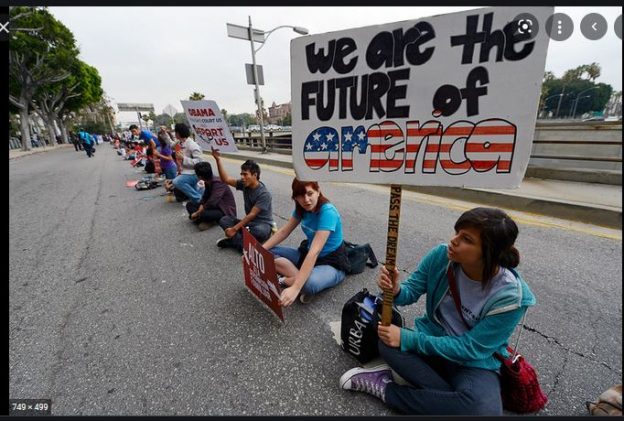Recently, Secretary of Labor Elaine Chao announced her “Skills to Build America’s Future” initiative. This is a “nationwide outreach and education effort designed to attract young people and transitioning workers to the key occupations of the (near) future: skilled trades.” This initiative, understandably, was proclaimed with little fanfare.
While President George W. Bush looks toward Mars, Chao hardly can be proud of her decidedly pedestrian prophecy that “construction laborers, operating engineers, carpenters, ironworkers, cement masons, bricklayers, truck drivers and many other construction-related crafts are among the trades expected to see the greatest demand in workers over the next six years.” (This demand will be filled, I predict, by “guest workers” i.e., illegal aliens awarded shiny new government permits.)
Telling America’s young people that the best they can hope for is a career as a tradesman certainly casts a pall over an administration given to grandiose planning and posturing. Essentially, the mathematically precocious youngsters with aptitudes for science, engineering or accounting must be yanked down to earth. Reaching for the stars in the America of the future will be the exclusive province of American Idol participants. And according to the Bureau of Labor Statistics’ latest Employment Situation Summary, Chao’s future is now.
For all the din sounded over the addition of 308,000 jobs to the economy in March, the government-fed news filters failed to mention which job sectors were surging. Sure enough, it transpires that employment opportunities are optimal in construction, retail trade, food services, social assistance and (naturally) government. As economist Paul Craig Roberts ,a rare independent thinker on the issue, observes: “Only labor involved in non-traded goods and services is safe from foreign substitution.” In other words, young Americans had better learn to live by their hands lest their livelihoods be “outsourced.”
If President Bush intends to revive the U.S. space program, engineers will be at a premium. Yet the Institute of Electrical and Electronics Engineers USA (IEEE-USA) the world’s largest technical professional society representing more than 225,000 electrical, electronics, computer and software engineers reports that “American high-tech firms shredded 560,000 jobs between 2001 and 2003, and expect to lose another 234,000 in 2004.” This contraction cannot be dismissed as the nadir of the dot-com correction. The jobless rate for electrical and electronics engineers was, in fact, lower in 2002 (4.2 percent) than in 2003 (6.2 percent).
Meanwhile, the Computing Research Association’s Taulbee’s Survey found that total enrollment in bachelor’s degree programs in computer science and computer engineering fell 19 percent in 2003, a factor it attributes to “the decline in the technology industry and the moving of jobs offshore.” (Curiously omitted are the impacts of the H-1B and L-1 work visas.) College administrators are already hip to Chao’s future. For example, San Francisco State University is considering the closure of its engineering school. Indeed, today’s college graduates cannot even expect to find entry-level jobs in the high-tech industry, warns entrepreneur Rosen Sharma. Sharma heads a Silicon Valley start-up that “could not survive without outsourcing.” Nevertheless, he fears for America’s future. “As a father, my reaction is different than my reaction as a CEO,” he admitted to Time.
Pay no attention to such Chicken Littles, the high-tech-industry lobbyists counter. Outsourcing is good for America, they claim. Their studies employ the “impregnable” science of econometrics to prove that outsourcing high-tech jobs creates more jobs than it kills. One such study, commissioned by the Information Technology Association of America, predicts 317,387 such jobs will materialize by 2008. The study’s premise, however, begs the question, as it assumes the new jobs are and will be as good as the old (vanished) ones.
Why, they’ll be even better, brags economist and outsourcing enthusiast Catherine Mann. She also labors under the illusion that only bottom-rung jobs are vanishing, playing Pollyanna to a doubting Thomas, Ron Hira of IEEE-USA. Hira confessed to Washington Post readers that he, an industry insider, has no idea what shape the “new” putative high-value jobs will take. “Is it nanotech, biotech, bioinformatics?” Of one thing he is certain, however: “Other developing and developed countries are targeting those very same industries and jobs.”
Thankfully, author Virginia Postrel has located America’s burgeoning (and indubitably “dynamist”) occupations. She faults the Bureau of Labor Statistics for not recognizing the rise of spa-related personal services e.g., manicure and massage therapy for the powerhouse growth industries they are. Of course, if Postrel is to remain faithful to the central thesis of her first book that all change is always good she is obligated to remain, like Mann, a Pollyanna, despite the new employment reality.
©ILANA MERCER
Insight On the News
May 11, 2004
CATEGORIES: Bush, Economy, Education & Miseducation, Free Trade, Labor, Libertarianism, Outsourcing, Political Economy, Technology

 print
print